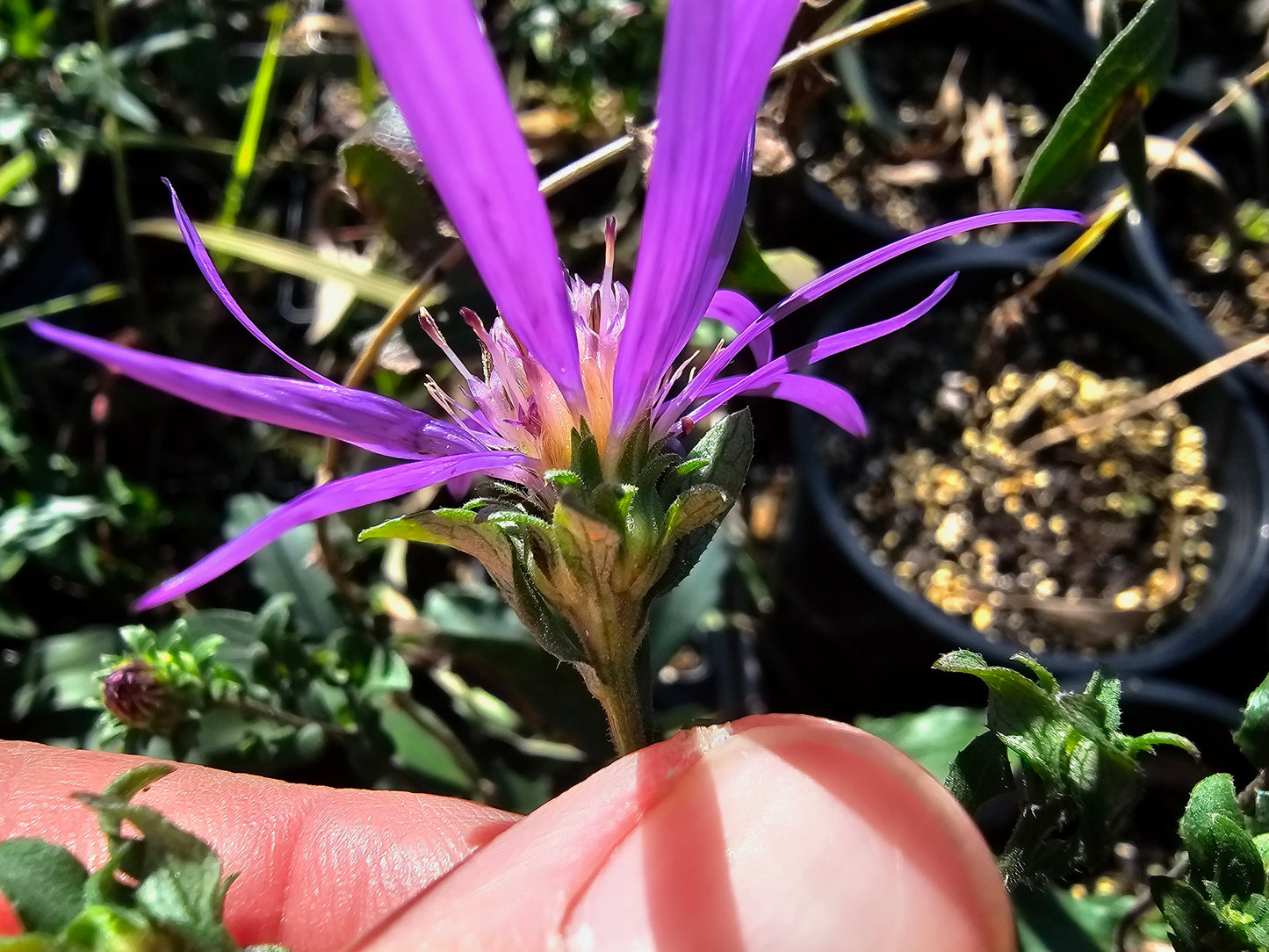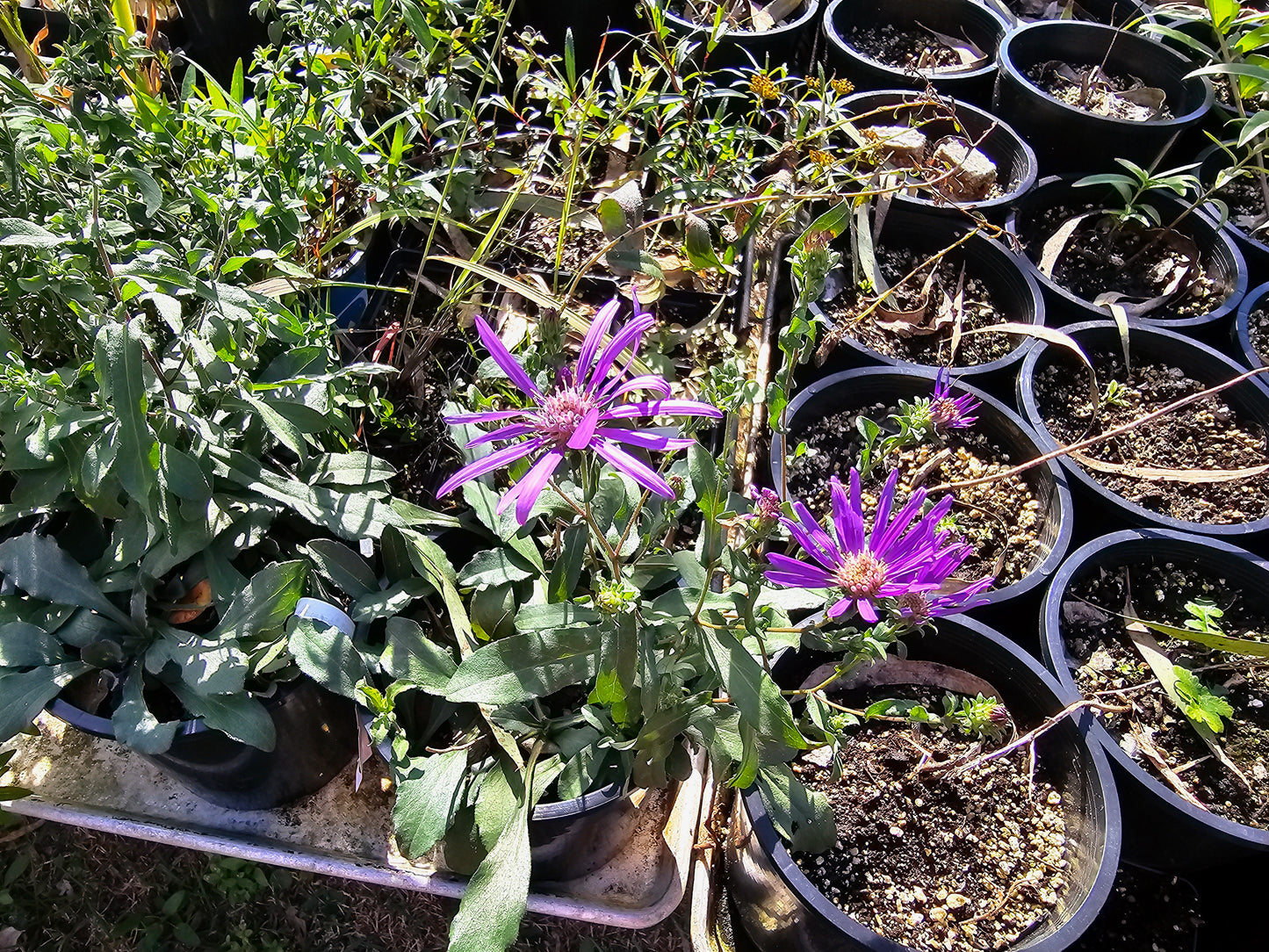1
/
of
3
Gnarly Nursery
Symphyotrichum georgianum
Symphyotrichum georgianum
Out of stock
Regular price
$5.00 USD
Regular price
Sale price
$5.00 USD
Unit price
/
per
Couldn't load pickup availability
Symphyotrichum georgianum
Synonym(s)
(Aster georgianus, Aster patens var. georgianus)
Common Name(s)
Georgia Aster
Threats to survival include elimination of habitat disturbance such as fire. Other threats include road construction and herbicide application.
This plant may be used in perennial borders or native meadow gardens. Bees and pollinators frequently visit this food source along with small mammals and deer.
It is not a particularly beautiful foliage plant. Its large, almost gangly growth form and its rough elliptical leaves are not especially interesting. It makes up for that, however, by its brilliant blue flowers. The ray petals are a rich purple-blue that is matched by no other wildflower; a bit like eastern silver aster, but richer. The disc flowers are white and turn reddish as they age. Each flower head is more than 1 inch across and large numbers are produced at any one time. Symphyotrichum flowers are of great interest to butterflies and bees, and this species is no exception.
Share





